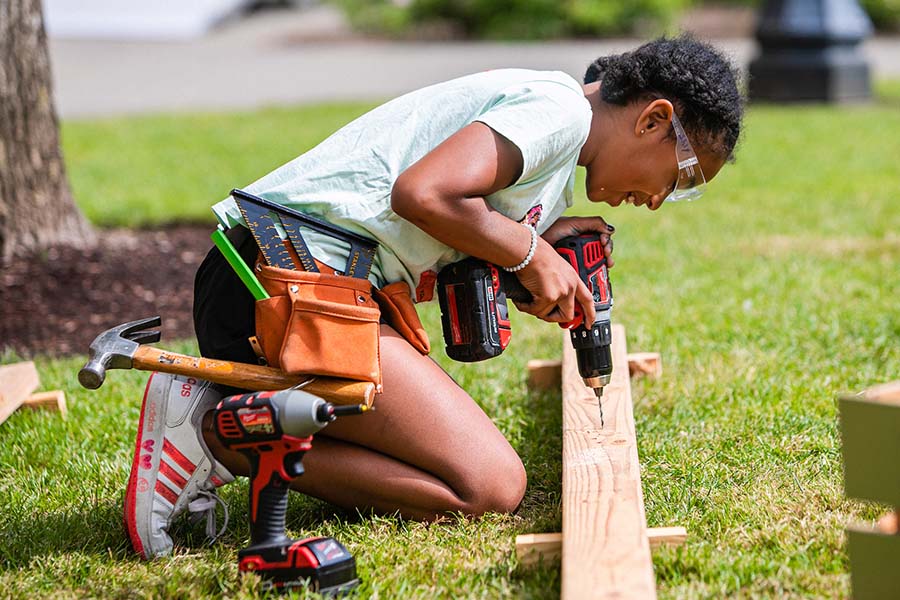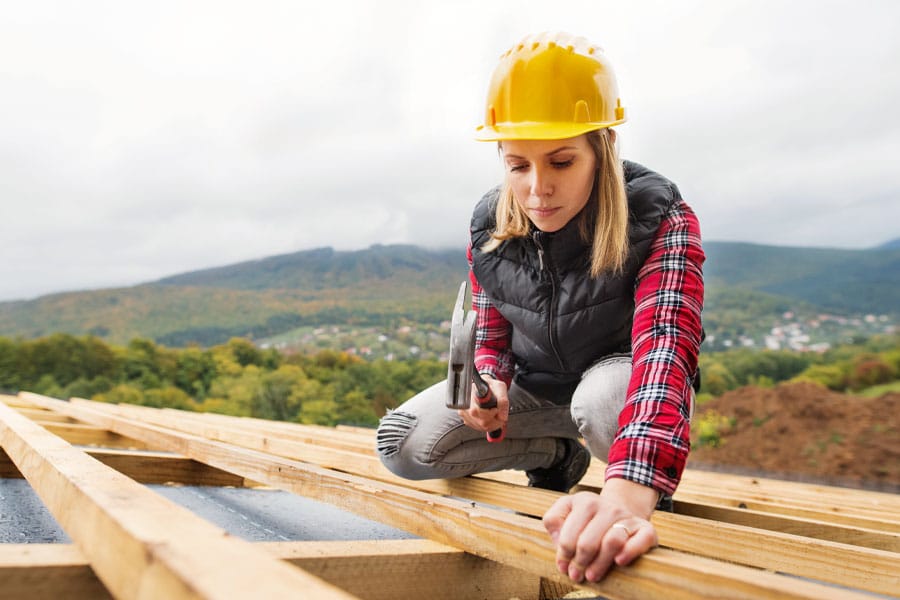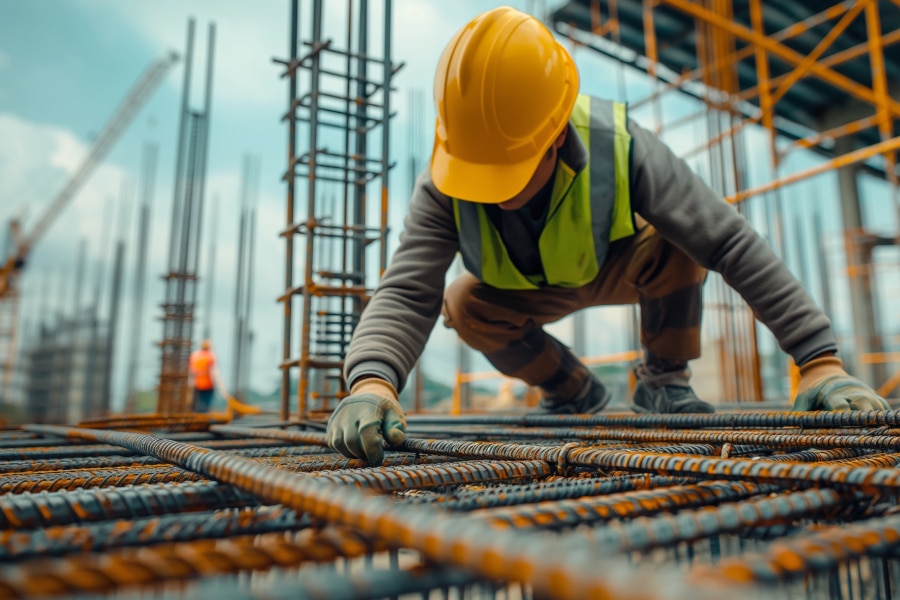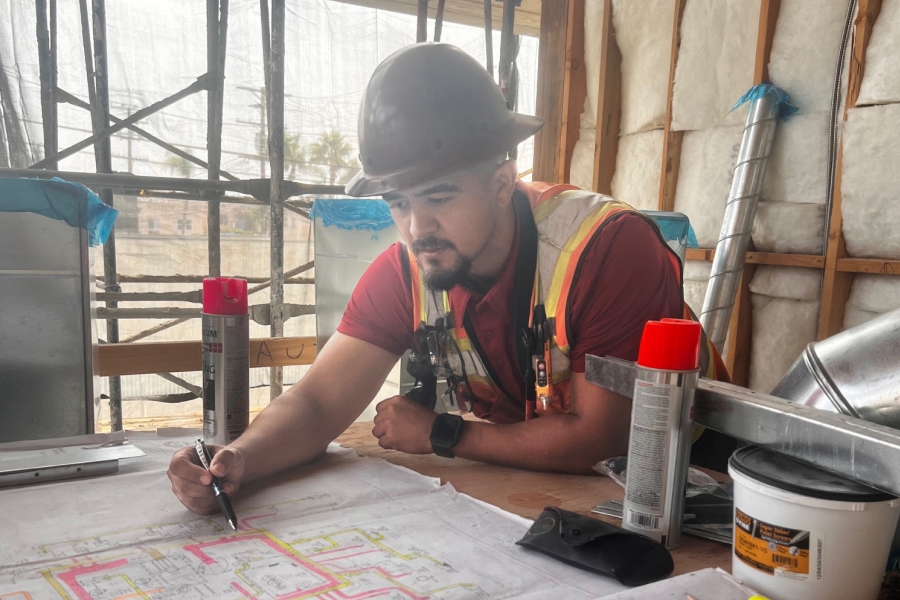According to the U.S. Bureau of Labor Statistics, women make up just more than 10% of all construction industry employees. And of that 10%, most are involved in the planning and management aspects of building, with only about 1 in 100 workers on the front line of jobsites identifying as female.
While there have been many industry-wide interventions designed to draw more women into construction, experts say we need to start exposing girls earlier to the career opportunities in the field. In fact, some estimate that by fourth grade girls have ruled out construction as a potential career—meaning early intervention has a real chance to make an impact.
Built sat down with Katie Hughes, executive director of the Portland, Oregon-based nonprofit Girls Build, to learn more about the critical work her organization does and what she’s learned about getting girls excited about potential careers in construction.
A personal connection
For Hughes, working with her hands has been a lifelong passion, one that led her to an early interest in construction experience. “I grew up on 10 acres and did a lot of the work that comes with growing up on property,” she said, “mending fences, fixing animal pens, cutting wood to heat our house and more.”
These early experiences impacted her decision to seek volunteer opportunities that relied on her love for building. “Once I graduated college, I spent a year refining and building on those skills through an AmeriCorps year with Habitat for Humanity,” Hughes said. “It was just the most fun, and I wanted other women and girls to know the joy of swinging a hammer.”

Hughes’ love for construction drew her to Girls Build, where she began working when it was part of another nonprofit, Oregon Tradeswomen Inc. At Oregon Tradeswomen she was the director of the girls programming and launched the organization’s first summer camp. “Girls Build is a kind of second generation nonprofit,” she said. “We started as a program of another nonprofit, but realized this type of programming could be successful, and more impactful, if it was a standalone nonprofit.”
The inspiration for Girls Build stemmed from Hughes’ connection with a community of women who loved construction as much as she did and were eager to share that passion with the next generation. “The idea stems from so many women who are now builders, or even basic tool users, who continually express the regret in not learning at a younger age. We want girls to grow up building—not come to it in their 20s, 30s or even 50s and 60s. It is very empowering and can have a life-changing impact.”
The Girls Build experience
So what happens at a Girls Build summer camp? According to Hughes, a little bit of everything.
“Camps are five days long, and run for eight hours each day,” she said. “Girls learn a variety of different trades through 20 workshops throughout the week—four each day. We try to add as much variety as possible, so they are learning carpentry, electrical, plumbing, sheet metal, blacksmithing, auto and bike mechanics, and really anything else we think sounds incredibly cool that is also safe.”
If that sounds like a lot of work for little hands, Hughes and the Girls Build team make sure everyone is well fed. “We also serve a warm breakfast and lunch every day and send them home with a snack,” she said. “It’s important to us that we feed kids while they are with us.”
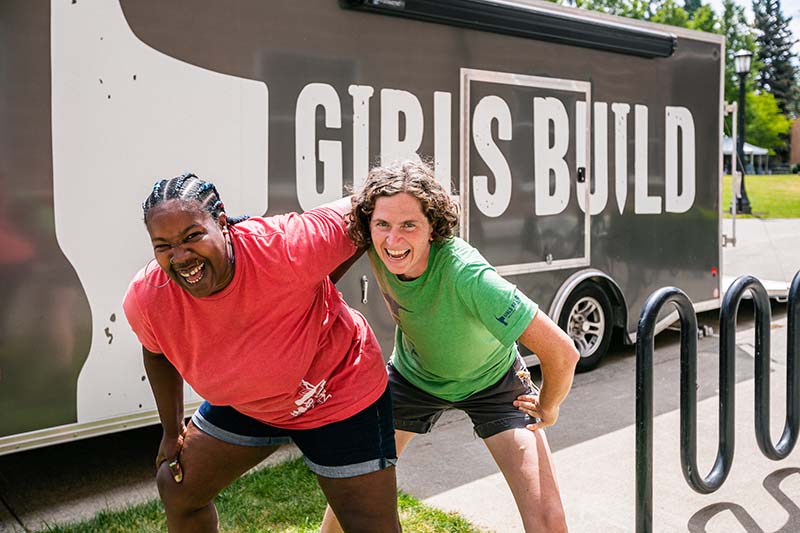
Providing the campers with a variety of hands-on building experiences allows each girl to discover the aspect of the trades they enjoy the most.
“One of my favorite stories is of a 10-year-old girl who was at camp during a particularly hot week,” Hughes said. “Every hour, we would turn on the hose and spray all 40 girls down so they would stay nice and cool. During one of these sessions, an instructor came over and asked if the spray down was mandatory. When I asked why, she told me that this little girl was really enjoying roofing and didn’t want to stop for the water games. Of all the things that I thought would hook a kid, it wasn’t roofing. But that’s why we try to have such a variety.”
Hughes said that the Girls Build platform not only allows campers to experience every aspect of the trades; it results in a huge array of exciting new projects to explore each session. “This last year, we built wooden pinball machines and they were incredible,” Hughes said. “We also made skateboards one year and taught the girls to skate—that was a very satisfying project.” Allowing girls to get hands on in creating unique and fascinating projects helps build a lifelong passion for construction work.
Why early intervention matters
For Hughes, introducing young girls early in their lives to the world of building is a critical aspect of the Girls Build mission. “People in general can be intimidated by tools,” Hughes said, “and so getting these big, powerful tools into an 8-year-old girl’s hands makes her feel big and powerful, too. And that’s a fantastic thing for our community at large.”
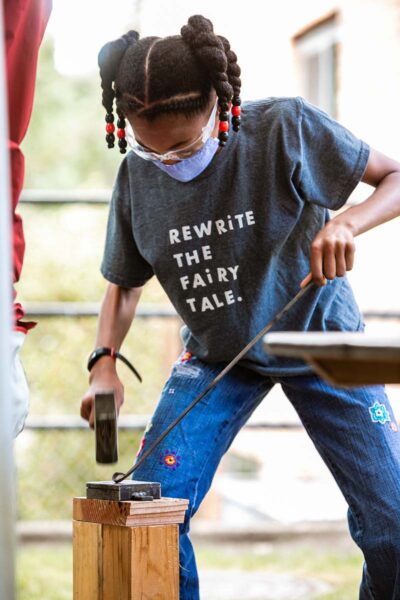
Whether the Girls Build campers end up pursuing construction careers in years to come, Hughes is proud of the practical skills and life lessons they acquire at camp. “Everyone should know how to fix and build basic things,” she said. “It feels good and saves money as you grow up. Plus, you can get more creative if you have the opportunity to build something yourself.”
Hughes also believes that the experience campers have at Girls Build helps them learn lessons that will serve them in whatever path they pursue.
“One of our favorite things is to watch girls make mistakes,” Hughes said. “Mistakes get such a bad rap, and they are truly the best. Campers absolutely struggle with it, but they quickly learn to fix it; get help from a friend and we get to watch that collaboration and support. They then realize that the mistake actually is better than their original plan. No matter the outcome, girls learn to move forward more boldly without that feeling of needing things to be perfect in order to try something new. And we hope that carries over into other parts of life as well.”
Ultimately, Hughes said she hopes the Girls Build framework of acceptance and inclusion can serve as a model for changemakers throughout the construction industry.
“The people in charge need to genuinely believe that there is a benefit to having women (as well as other underrepresented and minority trades workers in this traditionally male, white field), and enforce that daily through their words and actions, as well as policies and procedures,” Hughes said. “No one wants a career where they have to brace themselves for pushback from co-workers every day.”
So, how can construction professionals looking to encourage more diversity in construction pitch in?
“Support programs that help train and encourage women and girls to get into the trades,” Hughes said. “As a whole, acceptance and support for women in the trades needs to start at the top.”

